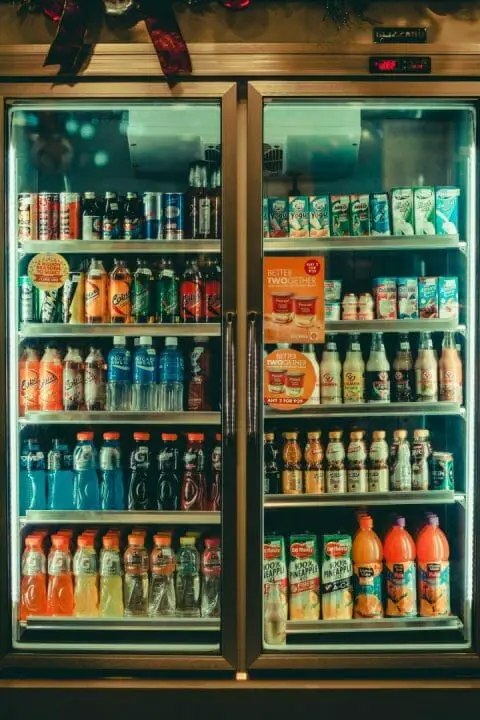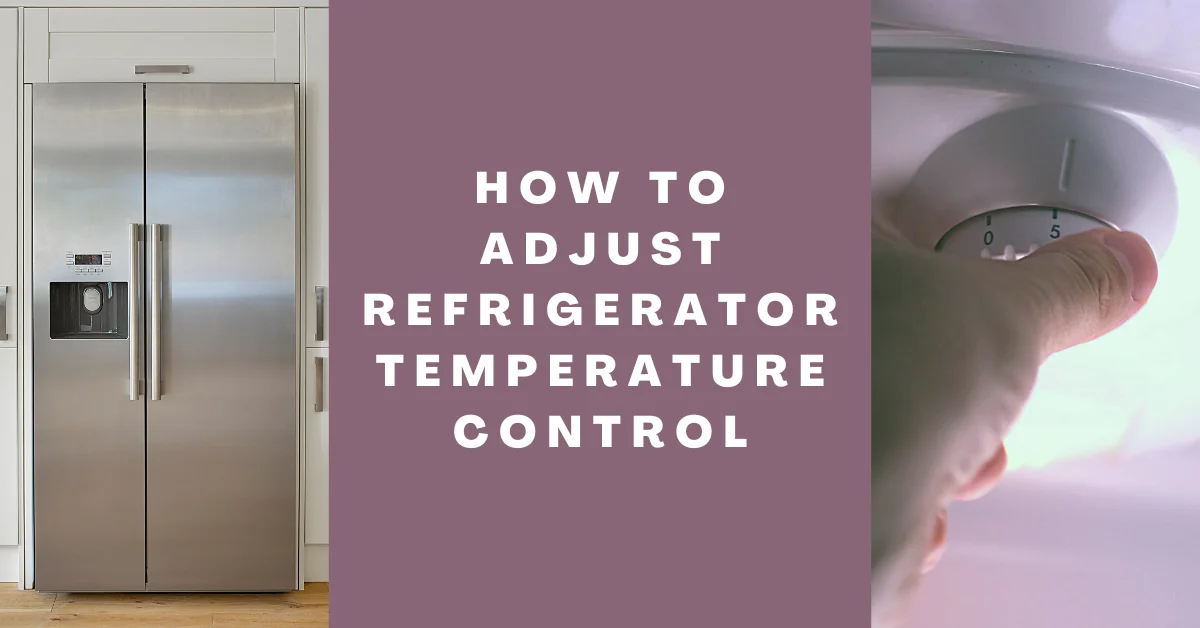Adjusting the refrigerator temperatures can be tricky. Especially if you experience all four seasons in your hometown. So, how to adjust refrigerator temperature control? What factors to consider and how to maintain the refrigerator? All the Answers to these questions lie in this not-so-little tutorial. So, hang on!
How to tell which number on a refrigerator is colder?
The dial usually consists of numbers ranging from 1-7. With 1 being the coldest and 7 being the warmest. Setting it to a 3 or 4 is optimum for keeping the food fresh.
How does a refrigerator control its temperature?
The thermostat is a prominent component of the refrigerator that administers the temperature of the refrigerator. It monitors the cooling process with the help of a compressor. The compressor switches off once it senses the temperature is cold enough and turns off when it feels the temperature rise.
The coils attached to the back of the refrigerator transport the hot gases produced by the compressor to the evaporator coils. The refrigerant travels at high pressures to cool down and condense back into the liquid form. These coils often get clogged and can result in poor circulation of the gases limiting the ability of the refrigerator to maintain its temperature.
Sometimes adjusting the temperature controls does not make any difference. The refrigerator compartment is either too warm or too cold to function normally. This is due to the irregular cleaning of the coils.
Adjusting the temperature
STEP 1: Identifying the knobs
The two adjustment dials found inside the refrigerator are thought to be the temperature controls for the refrigerator. However, this is not true for all models of the refrigerator.
For a standard refrigerator, you’ll find the dials inside. Most of the cool air generated inside the refrigerator cavity is produced within the refrigerator. One of these dials is used to direct the unit to maintain the refrigerator’s cooling. While the other controls the amount of cool air released into the refrigerator.
To identify the functions of these knobs, wait for a bit after adjusting one of them. You will hear the compressor turn on when you move one of the knobs towards the warmest side. If the baffle knob is adjusted, then the compressor continues to run as usual. However, turning the temperature knob shuts the compressor down.
STEP 2: Setting the temperature
Interpreting the units on the adjustment dials can prove to be a difficult task for some. Therefore, the US Department of Agriculture recommends using a refrigerator thermometer. This gadget can save you the trouble of remembering which number on the scale is the highest. Rather using this device can help you effectively and accurately measure the temperature at cooler levels.
Position the thermometer in a glass of water in the center of the refrigerator. For about five to eight hours. If the thermometer shows a temperature of more than 40 degrees, then use the baffle knob to increase the amount of coolant released into the coils. Make sure to reduce the temperature as well.
On temperatures lower than 38 degrees move the knob in the opposite direction to restrict the coolant flow. Once you are within the temperature range of 38-40 degrees F, place the thermometer between frozen food packages.
Wait for another five to eight hours to check if the temperatures have fallen below 38 degrees F. If so, then increase the temperature using the knob. Similarly, if the temperature is more than 2 degrees then dial the temperature down.

Factors affecting your refrigerator’s temperature
Multiple factors can steer the temperature of your freezer/ refrigerator. These factors can be as insignificant as the changing season. During the cold of December temperatures inside the homes, the refrigerator temperature also decreases. Similarly, in summer the opposite of this effect occurs.
Despite the refrigerator being a closed cavity, its temperature is still influenced by its surrounding environment. Frequently opening the refrigerator can result in inefficient maintenance of the temperature. The interior temperature is also influenced by the seals around the hinges of the refrigerator door. In the case that it leaks there is a hundred percent chance, that the interior temperature will also change.
Is your refrigerator not cooling? Try this!
Before you call your technician try vacuuming the condenser coils. This usually happens when you don’t clean them out occasionally throughout the year. Failure to keep up with the cleaning can lead to your refrigerator being inefficient.
If the refrigerator is still failing to function smoothly then you might need to check and reset the temperature of your refrigerator. The temperature should be set between 35- and 40-degree Fahrenheit. Whereas the freezer should be set between 0-5 degrees Fahrenheit.
If you find out that your refrigerator’s thermostat is broken, here is an in-depth guide on how to replace it!
The US Department of Agriculture recommends setting your refrigerator at a maximum temperature of 40 degrees Fahrenheit. At this temperature bacteria’s growth slows down. This does not mean that you set your refrigerator’s temperature to the lowest levels. For best results opt for temperatures above 38 and below 40 degrees.
Final thoughts
While you may often forget about the control panel mounted inside your refrigerator, you must set your refrigerator at the right temperature to avoid spoiling your food. However, the arbitrary numbers found on top of the dial and the gauges mounted in your refrigerator can make it difficult for it to function at an optimal temperature range. We hope our guide helped out!
If you recently bought a freezer and have been struggling with frozen lettuce and melted ice cream. Rather much worse when you must throw out spoiled milk or leftovers of your favorite snack. Then invest some time in learning the basics of setting your refrigerator’s temperature.



